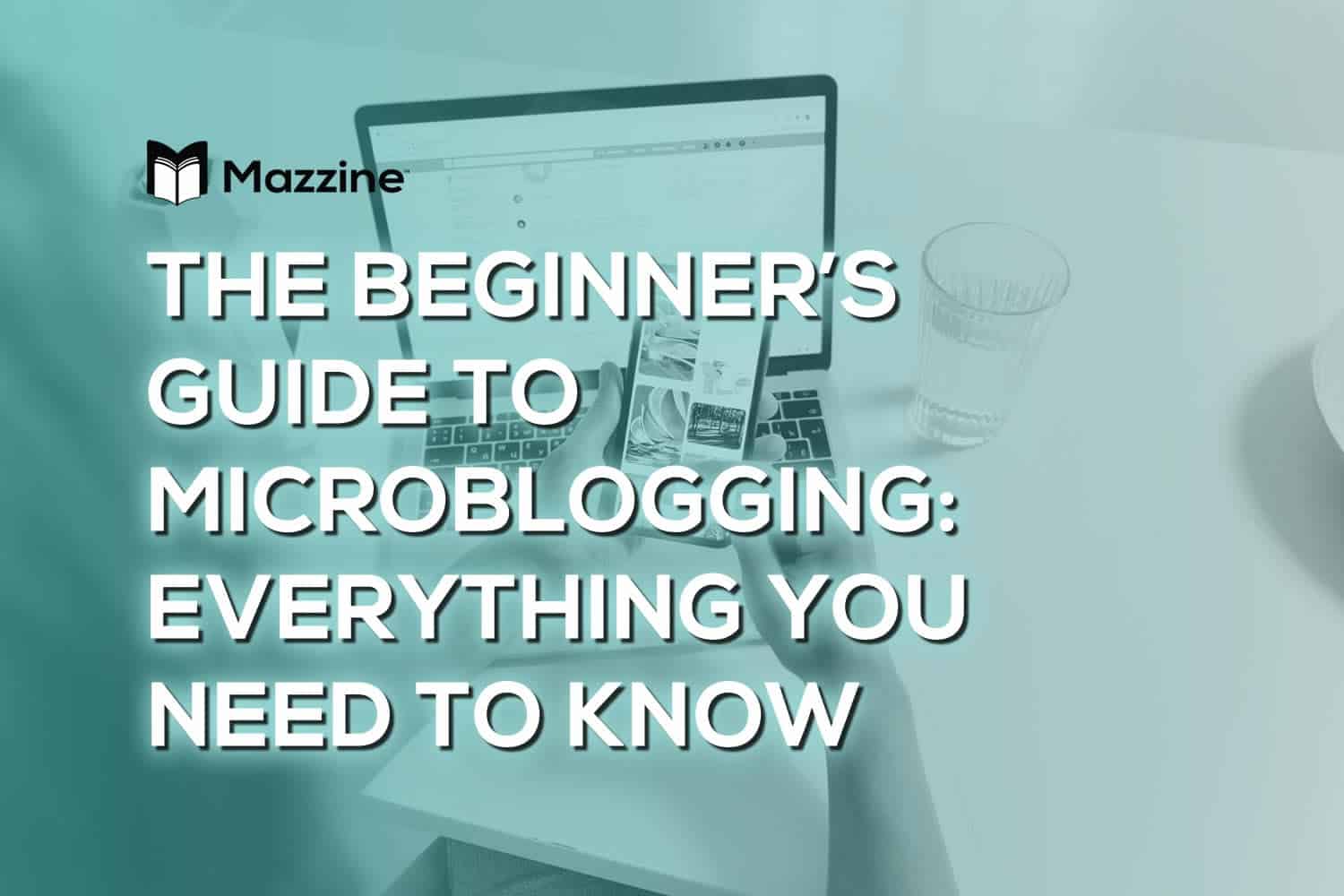Microblogging has become a popular form of online communication in recent years. Microblogging is a form of blogging that allows users to publish short, bite-sized updates of content. Twitter is a popular microblogging platform, with a 280-character limit per post.
Social media platforms such as Twitter and Instagram have simplified the process of sharing content with a wider audience, making it quick and efficient.
Microblogging is especially important for individuals and businesses who want to connect with their audience, share information, and build relationships.
Learn the basics of microblogging, including its definition, history, popular platforms, and best practices, in this beginner’s guide.
Additionally, we will explore the advantages of microblogging, distinguish it from traditional blogging, and provide guidelines for producing content, determining posting frequency, and interacting with your followers.
Finally, we will look at the challenges of microblogging and provide some tips for overcoming them.
By the end of this guide, you’ll have a comprehensive understanding of microblogging, its mechanics, and how it can help you achieve your blogging goals.
Whether you’re an aspiring blogger, an entrepreneur, or simply seeking to connect with others online, microblogging provides an effective means of sharing your content with a wider audience.
Let’s start the Beginner’s Guide to Microblogging: Everything You Need to Know.
Table of Contents
History of Microblogging

The concept of microblogging originated in the early 2000s, but people attribute its rise in popularity to the launch of Twitter in 2006.
Jack Dorsey, Biz Stone, and Evan Williams founded Twitter, which enabled users to send short messages or “tweets” of up to 140 characters. The platform quickly gained popularity and became a valuable tool for communication, news sharing, and social interaction.
Following the success of Twitter, other microblogging platforms like Tumblr, Plurk, and Sina Weibo emerged and gained popularity in different parts of the world. These platforms allowed users to share short messages, photos, videos, and other content with their followers and friends.
Microblogging has evolved to include multimedia content and features like live streaming, private messaging, and location tagging over time.
The rise of mobile devices has fueled the growth of microblogging, enabling users to share updates and engage with others anytime, anywhere.
Today, microblogging continues to be an important part of online communication and social media.
Microblogging platforms offer a range of opportunities for individuals and organizations to connect with their audience and share their message with the world, from personal blogging to business marketing strategies.
Popular Microblogging Platforms
There are several microblogging platforms available today, each with its own unique features and benefits. Here are some of the most popular microblogging platforms:
- Twitter – Twitter is one of the most well-known microblogging platforms. It allows users to share short messages or “tweets” of up to 280 characters, along with photos, videos, and other multimedia content. Twitter is popular among businesses, celebrities, and individuals who want to share their thoughts and ideas with a large audience.
- Tumblr – Tumblr is a microblogging platform that allows users to share short-form content, such as photos, videos, and GIFs, along with longer posts. It also has a strong social component, with users able to follow and interact with each other’s content.
- Instagram – Although Instagram is primarily recognized as a photo and video sharing platform, it also provides microblogging features. Users can share short captions along with their photos and videos, and the platform also includes features like Stories and Reels for sharing short-form content.
- LinkedIn – While primarily known as a professional networking platform, LinkedIn also offers microblogging features through its “Articles” feature. Users can share longer-form content, such as blog posts and thought leadership pieces, with their professional network.
- Facebook – While not traditionally considered a microblogging platform, Facebook offers many of the same features as other microblogging platforms, including short status updates, photo and video sharing, and the ability to follow and interact with other users’ content.
These are just a few of the many microblogging platforms available today. Each platform offers its own unique benefits and features, so it’s important to choose the platform that best fits your needs and goals.
Microblogging vs. Traditional Blogging

While microblogging and traditional blogging share some similarities, there are also several key differences between the two. Here are some of the main differences between microblogging and traditional blogging:
- Length: The most obvious difference between microblogging and traditional blogging is the length of the content. Micro blogs typically consist of short messages, captions, or updates of 280 characters or less, while traditional blogs usually consist of longer-form content, often ranging from 500 to 2000 words or more.
- Frequency: Microblogging is typically more frequent than traditional blogging. Micro bloggers often post several times a day, while traditional bloggers may only post once or twice a week.
- Format: Microblogging platforms are designed for short-form content, often featuring multimedia elements like photos, videos, and GIFs. Traditional blogs are typically text-based, with longer-form articles and fewer multimedia elements.
- Purpose: While both microblogging and traditional blogging can be used for personal or business purposes, they often have different goals. Traditional blogs are often used for thought leadership, education, and building a brand or business. In contrast, microblogging is commonly utilized for rapid updates, sharing news and events, and fostering engagement with followers on a more intimate level.
Ultimately, the choice between microblogging and traditional blogging will depend on your goals and the needs of your audience. Both platforms offer unique benefits and can be effective tools for connecting with others online and sharing your message with the world.
How to Get Started with Microblogging

If you’re interested in trying your hand at microblogging, here are some tips for getting started:
- Choose a platform: Start by choosing a microblogging platform that’s right for you. Some of the most popular options include Twitter, Instagram, and Tumblr, but there are many other platforms to choose from as well.
- Set up your profile: Once you’ve chosen a platform, it’s time to set up your profile. Make sure to choose a username that’s easy to remember and represents you or your brand. You should also add a profile picture and write a bio that describes who you are and what you’ll be sharing on your micro blog.
- Start posting: Once your profile is set up, start posting content. Remember to keep your posts short and engaging, and to use relevant hashtags to help people discover your content. You can also add multimedia elements like photos, videos, and GIFs to make your posts more engaging.
- Engage with others: Microblogging is all about engagement, so make sure to engage with others on the platform. Respond to comments and messages, share other people’s content, and use relevant hashtags to join conversations and connect with others in your niche.
- Be consistent: To build a following and grow your micro blog, it’s important to be consistent with your posting. Try to post regularly, whether that’s once a day or several times a week, and make sure to maintain a consistent brand voice and aesthetic.
By following these tips, you can start building a successful micro blog that connects you with others and helps you share your message with the world.
Best Practices for Microblogging
Although microblogging is a more casual and abbreviated form of blogging, it’s still essential to follow best practices to create engaging and effective content.
Here are some tips for making the most of your microblogging efforts:
- Keep it short and sweet: Keep your microblog posts short and to the point, ideally around 140 characters or less (depending on the platform), and avoid tangents or including unnecessary information.
- Use multimedia: Adding photos, videos, and other multimedia elements to your micro blog posts can help to make them more engaging and shareable. Experiment with different types of multimedia to see what works best for your audience.
- Use hashtags: Hashtags are a great way to help your posts get discovered by people who are interested in the same topics as you. Use relevant hashtags in your posts to make them more discoverable.
- Engage with others: Microblogging is a social activity, so make sure to engage with others on the platform. Respond to comments and messages, and participate in conversations to build relationships with others in your niche.
- Be authentic: People follow micro blogs because they want to hear from real people who are sharing their genuine thoughts and experiences. Be authentic in your posts, and avoid trying to be someone you’re not.
- Keep a consistent brand voice: While microblogging is more informal than traditional blogging, it’s still important to maintain a consistent brand voice and aesthetic. Make sure that your posts are consistent in tone and style, and that they reflect your personal brand or the brand of your business.
Following these best practices will help you create microblog content that is effective, engaging, resonates with your audience, and helps you build your online presence.
Here is a PDF to Microblogging Guidelines and Best Practices
Benefits of Microblogging
Microblogging has become increasingly popular in recent years, and for good reason. There are a number of benefits to incorporating microblogging into your online presence, including:
- Increased engagement: Because microblogging is a more casual and conversational form of blogging, it can be easier to engage with your audience and build relationships with your followers.
- Improved brand awareness: Microblogging platforms like Twitter and Instagram have massive user bases, which can help you to reach new audiences and build awareness for your brand.
- More frequent updates: Traditional blogs typically require longer, more in-depth posts that may only be published a few times a week or even less frequently. With microblogging, you can post updates more frequently, which can help to keep your followers engaged and interested.
- Improved search engine rankings: By using relevant hashtags and keywords in your micro blog posts, you can improve your visibility in search engine results pages (SERPs) and attract more traffic to your website or other online platforms.
- Greater flexibility: Because micro blog posts are shorter and more concise, they can be easier to create and share on the go. This can be especially useful if you’re running a business or managing a personal brand and need to keep your followers up-to-date with the latest news and information.
By leveraging these benefits and integrating microblogging into your online presence, you can cultivate a more engaged following, enhance your online visibility, and strengthen your reputation.
Here is a list of 40+microblogging case studies and resources.
Challenges of Microblogging

While microblogging offers a number of benefits, there are also some challenges that come with this form of online communication. Here are a few of the key challenges that you may encounter when trying to incorporate microblogging into your online presence:
- Limited space: Microblogging platforms typically limit the length of each post, which can make it challenging to convey complex ideas or express yourself fully.
- Noise and competition: With so many people using microblogging platforms like Twitter and Instagram, it can be challenging to stand out from the crowd and get noticed by your target audience.
- Maintaining consistency: Because microblogging requires more frequent updates than traditional blogging, it can be challenging to maintain a consistent posting schedule and keep your followers engaged over time.
- Negative feedback and criticism: Microblogging can be a highly public form of communication, which means that negative feedback or criticism can quickly spread and damage your online reputation.
- Lack of control: Microblogging platforms are owned and operated by third-party companies, which means that you may not have complete control over your content or how it is displayed to your followers.
By being aware of these challenges and taking steps to address them, you can ensure that your microblogging efforts are effective, engaging, and successful over the long term.
This may involve creating a content strategy, investing in social media management tools, or working with a digital marketing agency to develop and execute your microblogging campaigns.
The University of Sheffield have a PDF with information about: Uses and Risks of Microblogging in Small and Medium Enterprises
Conclusion to Microblogging
Microblogging is a powerful and effective way to communicate with your target audience and build your online presence. By using social media platforms like Twitter, Instagram, and Tumblr, you can reach millions of people with just a few words or images.
In this beginner’s guide to microblogging, we have discussed the history of microblogging, popular platforms, the differences between microblogging and traditional blogging, how to get started, best practices, benefits, and challenges.
Remember, the key to success with microblogging is to be authentic, engaging, and consistent in your communication with your followers.
Build a loyal following and achieve online marketing goals by sharing valuable content, engaging with feedback, and staying active.
So what are you waiting for? Start microblogging today and watch your online presence grow!
For Further Reading:
12 Proven Tips to Get Your Blog Noticed Today
Blogging Strategies: How to Write & Launch Your First Blog Post
Writing Tips for Successful Blogging: Improve Your Content with These Strategies
FAQ
What is microblogging?
Microblogging is a form of blogging that allows users to share short-form content, typically consisting of text, images, or videos.
Who invented microblogging?
Pyra Labs created the first microblogging platform in 1999, although the term ‘microblogging’ was not coined until later.
What is an example of microblogging?
Twitter is one of the most popular microblogging platforms, allowing users to share short messages, or “tweets”, with their followers.
What is the minimum micro blog post length?
The maximum length of a micro blog post varies depending on the platform, but typically ranges from 140 to 280 characters.
How often should you microblog?
The frequency of microblogging depends on your goals and audience, but experts generally recommend posting at least once a day to maintain engagement.
What are the benefits of microblogging?
Microblogging allows for quick and easy content creation, increased engagement with audiences, and the ability to share timely and relevant information.
What is the main difference between a blog and a microblog?
The main difference between a blog and a micro blog is the length of the content. Blogs are typically longer and more detailed, while micro blogs are short and to the point.
How do I start a micro niche blog?
To start a micro niche blog, choose a specific topic or area of interest and create content that appeals to a small but dedicated audience. Use social media to promote your blog and engage with your audience.


